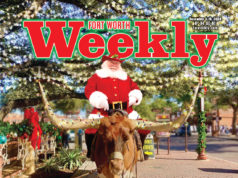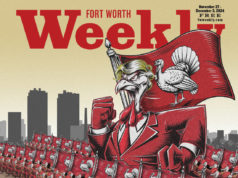The musicians at Mambo’s Tapas Cantina were recently doing what their predecessors have been doing for ages: showing off licks, telling life stories set to music, and improvising within the unspoken rules of the discipline called the blues.
 As they are every Monday, bassist Cadillac Johnson, drummer Gonzalo “Gonzy” Trevino, and guitarist Hash Brown were at the downtown bar and restaurant, holding a steady shuffle and pumping out those once-in-a-lifetime guitar solos. Guitarist Drue Webber, just shy of his 30th birthday, was the youngest muso in the place.
As they are every Monday, bassist Cadillac Johnson, drummer Gonzalo “Gonzy” Trevino, and guitarist Hash Brown were at the downtown bar and restaurant, holding a steady shuffle and pumping out those once-in-a-lifetime guitar solos. Guitarist Drue Webber, just shy of his 30th birthday, was the youngest muso in the place.
As Webber was putting away his guitar afterward, a woman walked up to him and said she heard the music from the street. “It was like she’d been in the desert without water,” he said. “She wanted to know where the good blues had gone. She needed a hospital visit to take care of her need for the blues.”
A lot of other blues fans in town probably feel the same way. The Fort Worth scene these days isn’t actually a desert, despite the recent news that there would be no more regular shows at J&J Blues Bar, one of the oldest and most popular blues clubs in not just Fort Worth but all of North Texas. But, like many across the country, Fort Worth’s blues scene has dried up considerably in recent years. From the late 1940s through the ’90s, it was a truly special thing. A handful of internationally acclaimed players called Fort Worth home. T-Bone Walker, Cornell Dupree, Ray Sharpe, and several other artists and their backing bands spawned a distinct sound: The Fort Worth Shuffle, a lazy, Texas-styled beat found here and only here. (Think: the ching-ching-ching-bop-budda-bing of Stevie Ray Vaughan’s “Texas Flood” but lazier.) And many internationally known players such as Bobby “Blue” Bland, Jimmy Reed, and Howlin’ Wolf regularly played here.
Though “JJ’s,” as the place was affectionately known, is gone, Mambo’s, Keys Lounge, and, in Arlington, Stumpy’s Blues Bar still carry on, offering solid live blues most nights of the week. Other venues rotate blues with rock and country. Still, the fact is, blues music is almost an afterthought here. Musicians and fans in other cities may accept that outcome as inevitable. But in Fort Worth, the tradition is too rich to be allowed to die quietly.
Like their counterparts from other genres and cities, many Fort Worth bluesmen (and -women) have figured out they need to adapt or see their careers and their art form fade and audiences shrink. The blues, perhaps to a greater degree than other forms of music, has always been influenced by the push and pull between old and new. Now its practitioners find themselves having to reinvent the way they market themselves and, at times, to go outside their genre and apply the basics to country and rock.
Some of them wonder how much longer there will be enough bluesicians in town to keep up that musical conversation, one that has sustained them and their kind for so long. It’s a real challenge to find blues on area radio –– only KNON/89.3-FM and KKDA/730-AM play blues and, even then, only occasionally. Local media typically ignore blues artists and events, and most young players gravitate toward rock, country, rap, or Americana, sexy genres with wide appeal. Listeners spend much less money on music these days, which is true for every genre, but especially harmful for an already struggling art form like the blues.
It’s a worrisome time for folks like guitarist John Zaskoda, who has always wanted to play the blues. Instead, his band, JZ & Dirty Pool, offers a mixed bag of blues, country, and rock, and it still doesn’t pay the bills. So last year he signed up to play lead guitar in the band of wildly popular mainstream country artist Casey Donahew. “It was just a job,” though, Zaskoda said. “As a guy who has been dedicated to the blues art, there is nothing more rewarding other than my passion.”
Via guitar improvisation, steady rhythms, and confessional or allegorical lyrics, each major player has helped shape the blues into a clearly identifiable form of creative expression.
Blues music was born in the Deep South sometime in the 1800s, started by slaves who had little more than guitars and voices to express themselves artistically. Several decades later, the wistful ballads and hymns buoyed by remnants of African rhythms created a new era in American music. During the ’40s, the blues spread rapidly throughout the South, catering primarily to black audiences. Here in Fort Worth, a pool of talented horn and guitar players entertained crowds of listeners in local black clubs and gatherings.
Fort Worth’s blues roots date back to the late 1930s, when a club opened up in Como, a Westside neighborhood created by wealthy whites to provide nearby housing for their servants. The Blue Bird would serve as one of the main anchors of local blues for more than 60 years. Its first incarnation was extremely modest. “It was just two railroad cars joined together into an L shape,” said Sumter Bruton, a guitarist and owner of Record Town on University Drive –– and also the pre-eminent expert on Fort Worth blues. “They kept adding on to it.”
By the 1950s, many other blues clubs had opened and closed around town, places like Zanzibar, Barney’s Missile Club, and Jim Hotel. All were patronized by mostly multiracial audiences. The Blue Bird and a black mosque on the near South Side hosted numerous blues acts, as did TJ’s Famous Chicken and its neighbor, The Silver Dollar, both on East 4th Street just south of downtown. “The ’50s and into the ’60s were really the heyday,” Bruton said. “Black musicians were working, and all the frat parties had bands. It was a mixed crowd all the way.”
In the ’50s, traditional blues, which adapted left-hand piano rhythms onto a guitar, was the rage among music listeners. People all over town wanted to hear it, even if they didn’t all end up at the same venues. “It was chancy to go to the black clubs in the early ’60s,” Bruton said. “The voting rights act hadn’t happened yet, but after that, no problem. The Blue Bird was half white and half black; everyone from debutantes to hardcore Como people.”
Fort Worth was fortunate in its blues heritage. It can claim famous blues guitarists like Walker, who lived here for a stretch; Sharpe, who wrote the popular song “Linda Lu”; and Dupree, who played with many famous artists, including Aretha Franklin and King Curtis. Everyone, it seemed, loved and listened to live blues in the late ’60s and early ’70s, including Bruton, who could identify blues artists before he could read. Local artists such as Robert Ealey, U.P. Wilson, Freddie Cisneros, Ray Reed, Pearl “Lady Pearl” Johnson, Ray Flangin, Reverend Filmore, and others were flourishing.
After that, for the first time since its initial popularity, blues disappeared from America’s public eye, as British rock sounds took over airwaves.
In actuality, the British rockers had taken American blues and made it into their own music. As teenagers, Britons like John Lennon and Eric Clapton devoured American blues records. The genre’s progressions and rhythms influenced a new brand of music that included the Rolling Stones, The Yardbirds, and The Beatles. When they exported their music across the Atlantic Ocean to the states, people called it the British Invasion, and its new fans had little idea how the blues had evolved into something they called rock ’n’ roll.
In the early ’70s, as Beatlemania turned into discomania, a shift was also happening in regard to the blues. “Black clubs started closing up,” Bruton said. Progressive country and soul became much more popular styles of music, and blues artists like Bruton fled back to the old blues hideouts. “I had to retreat to the Blue Bird for six years until [disco] blew over,” he said.
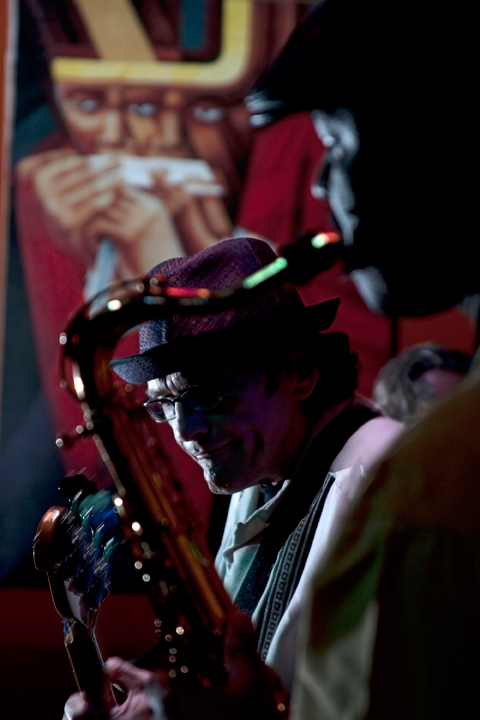 In 1977, Bruton started the Juke Jumpers. Around the same time, then-Austinite Stevie Ray Vaughan became a popular figurehead of the sound. It was perfect timing. Music “changed over,” Bruton said. “It went back to a blues thing.”
In 1977, Bruton started the Juke Jumpers. Around the same time, then-Austinite Stevie Ray Vaughan became a popular figurehead of the sound. It was perfect timing. Music “changed over,” Bruton said. “It went back to a blues thing.”
Well into the ’80s, local musicians from string-pickers to drummers set about emulating the modern blues sounds being popularized by people like Vaughan or referring back to the earlier masters. In Fort Worth, the blues revival happened under the leadership of blues singer Ealey, who eventually bought the Blue Bird.
New blues clubs opened all over Fort Worth. Blossom’s on Merrick Street, the HOP on West Berry Street, and the curiously named Pepper’s all attracted big audiences. Guitarist James Hinkle, who had recently completed his studies in visual art at the University of Texas-Austin, remained in Austin but regularly traveled to Fort Worth on weekends to play club shows here –– the Fort Worth blues scene was that happenin’. He found an entirely new cadre of musicians who were embracing the sound.
Cadillac Johnson, ZZ Top’s original bassist, remembers the days. “A lot of guys came up in the Blue Bird school of music,” he said. Internationally famous artists, including Delbert McClinton, T-Bone Burnett, and Bruton’s brother, the late Stephen Bruton, polished their chops at the Blue Bird in the late ’70s and early ’80s. “It was certified blues,” Johnson said, “true to form and unadulterated.”
By the early ’80s, blues music had lured away former rock aficionados both here and all over the country. “The blues turned us around,” said Johnson. “It influenced us to study the masters.”
As more and more Fort Worth musicians made the tradition their own, they also made it, for a time, the center of the local music scene.
And so for a while, the masses came back to the blues. In those crazy ’80s, Ealey captured a city full of people. BMWs and Mercedes dotted the Blue Bird parking lot. Doctors, lawyers, and other professionals flocked to places like the Bird and the HOP to check out groups like the Juke Jumpers.
Eric Clapton, ZZ Top, and Stevie Ray Vaughan had infiltrated stereos all over. “There was a lot of hype about the blues,” Zaskoda said. Masters of the craft like Ealey and other veterans such as local guitarists Wilson and Cisneros showed up-and-comers how it was done. People were paying careful attention to flashy guitar solos and all-American guitar tones.
Of course, the ’80s were known for a lot more than the blues. The party in general was in full swing. “Everybody knew everybody,” Hinkle said. “Lots of Westside money went up people’s noses. Everybody was doing blow. Not me, of course.”
And the good times seemed ready to stay for a while and to spread themselves around.
In 1986, Jim Schusler took advantage of the wild scene. He renovated a property on Woodward Street off White Settlement Road just north of the Trinity from downtown and turned it into J&J.
“In its heyday, JJ’s was a staple here,” Johnson said. One of its main selling points was manager Dave Jeffery, who was called The Harptender because during down times he would play his harmonica behind the bar for the whole room to hear.
Jeffery had massive connections in the blues world. Under his guidance, the club booked big traveling acts like Roomful of Blues, Kim Wilson and The Fabulous Thunderbirds, Fort Worth’s McClinton, and another local kid done good, Doyle Bramhall Sr. Jeffery filled in holes in the schedule with local guys like Hinkle, Buddy Whittington, Holland K. Smith, and Andrew Jr. Boy Jones.
“JJ’s opened up at a time when you could make a living playing the blues,” Hinkle said. From $10 covers, Schusler could afford to pay bands like Hinkle’s $1,500 for a single show –– a nice night by any era’s standard. “They would pack ’em in,” Hinkle remembered.
Although Keys Lounge started offering live blues in the ’80s, and the Blue Bird was still a force to be reckoned with into the ’90s, J&J was the heart of the scene almost from the beginning. Schusler published calendars full of well-known national and local acts, and through the ’90s, the crowds came.
As teenagers, both Zaskoda and Webber stumbled upon J&J and the happening Fort Worth bluescape. “It was a healthy scene,” Zaskoda said. “JJ’s and the Plaid Pig on [South] University [Drive] catered to blues. It wasn’t hard to get work.”
At 18, Zaskoda would happily bring his ax to the many jams around town, not caring about what he got paid.
Blues in any venue, in almost any city could still draw an audience in the mid-’90s, and no young bluesman dreamed that all of those years of practice would not lead to a career in the blues. Webber and Zaskoda thought they would be carrying the torch forever. But the next decade brought a rude awakening.
“By ’97 or ’98, things started to change,” Hinkle said. “Venues on the road were closing. I was making less money, and I noticed the crowds were getting a little lighter. … JJ’s started hurting. The crowds were slacking off.”
By the late ’90s, very few young players were making blues music, and their young friends weren’t really listening to it. Rock, grunge, and hip-hop were more popular, and technology had started exerting its huge influence on how music was made and consumed. Young black musicians, especially, neglected the blues, preferring instead to be hip-hop or rock artists. Nothing can substitute for years of practice for blues musicians, but anyone with a microphone and a computer can be a rapper.
Technology, for the most part, has done nothing for the blues. Prime guitar tones still sound best through tube amps. No looped beat will ever replace a real Fort Worth Shuffle, and can anyone imagine Robert Ealey with Auto-Tune?
So music fans here and elsewhere got used to new sounds and constant innovation in music, while the blues stagnated. “Stevie Ray Vaughan wore the blues out,” Bruton said. “Some kids still studied it, but most stopped there.”
During the early 20th century, blues diversified into Chicago blues, Texas blues, Delta blues, and more, but even those progressions stopped several decades ago. As an overall art form, blues hasn’t evolved in more than 40 years.
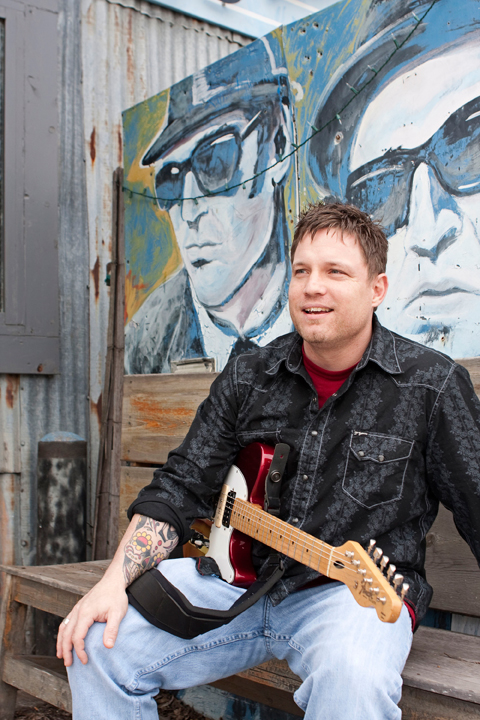 In Fort Worth, younger fans were spending time at The Aardvark and Wreck Room, where an old cover tune could be a song from the ’80s. The hardcore, older blues fans were still making it out to J&J, Keys, or Stumpy’s, but their collective presence was dwindling.
In Fort Worth, younger fans were spending time at The Aardvark and Wreck Room, where an old cover tune could be a song from the ’80s. The hardcore, older blues fans were still making it out to J&J, Keys, or Stumpy’s, but their collective presence was dwindling.
Music revenues in general are plummeting, thanks to lower incomes, the higher cost of living, free online music, and the increasing difficulty of enjoying a night on the town while avoiding driving while intoxicated. Blues has especially felt the pinch. With young fans going elsewhere, clubs like J&J had to rely on audiences mostly age 50 and above.
Johnson said blues fans and players 40 or older “just don’t go out as much.” In his eyes, people these days want a “sure thing” when they embark on a night on the town. “You have to be consistent and stick with one thing,” he said. If a couple gets dressed up and hires a babysitter only to find a fiddle and some twang at a blues club, they’ll likely skip the outing next time.
Fort Worth blues fanatics who did venture out found that a lot of the old scene was gone for good. The Blue Bird grew shadier by the year. Drug dealers replaced the yuppies, and few from outside the Como neighborhood ever ventured into the bar. Ealey passed away in 2001 from injuries sustained in a downtown car accident. Wilson spent much of 1998 in prison for cocaine possession and upon his release moved to Paris, where he died in 2004. “A lot of people who had a big influence, the old cats, passed on,” Hinkle said. “It’s hard to get people invigorated into roots music when they don’t have the ‘real deal’ to look up to.”
And by the real deal, Hinkle is talking about true blues players. Blues is a formulaic –– and some say overly simple –– sort of music. Most of it is based on a three-chord, 12-bar format, which local roots-rock singer-songwriter Luke Wade calls “paint by numbers.”
Blues music can be about sad topics or wild times, but even some of its most ardent fans admit that it is, essentially, an art form of the past. Any overhaul of blues music moves it into an entirely new genre. Blues music demands its drummers to hold a simple, steady beat for an entire set. Playing lots of fills or inventing beats isn’t allowed in the blues. Many young players who showed up at area blues jams in the last decade were told thank you, but that killer solo isn’t the blues. “The key is to play it right, to pick up on the nuances and the subtleties,” Johnson said. “It takes a maturity in your playing.”
When a hyper drummer or bassist wants to re-invent a blues rhythm, he or she turns a blues song into a rock song but one with blues elements. If it doesn’t swing like the blues, it’s breaking the rules. Formula can bore musicians other than guitar players, who are allowed room for improvisation. For many other players and fans, the blues’ strict dedication to tradition lacks the excitement and flair of less strict types of music
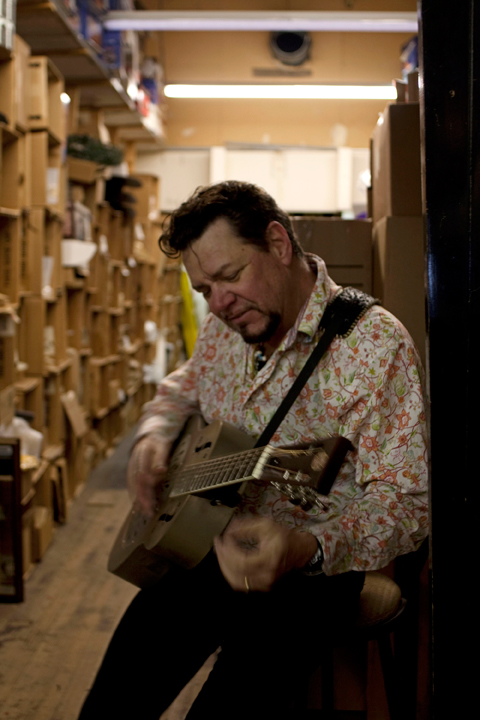 Pigeonholing the blues into such a narrow definition undoubtedly has helped contribute to its declining popularity. With every other kind of music fusing with everything else, many blues purists missed the boat in regard to the synergy of modern world music.
Pigeonholing the blues into such a narrow definition undoubtedly has helped contribute to its declining popularity. With every other kind of music fusing with everything else, many blues purists missed the boat in regard to the synergy of modern world music.
In the past decade, to accommodate changing tastes and the smaller rotation of area blues artists, J&J and other venues started expanding their calendars to include more of everything. As at blues venues across the country, people who showed up at J&J might find anything from blues to Americana to straight rock. The change alienated many of the blues musicians who had spent over a decade populating the place.
Blues enthusiasts still considered J&J Blues Bar an essential destination, but Schusler “wanted to go in a different direction,” drummer Trevino said. “He had problems with paying bands so much, even though the money was coming from the door, not the bar.”
Due to philosophical differences, Harptender Jeffery parted ways with the club. “After he got let go, it never had the same clientele,” Trevino said. “It ruined the vibe. Lots of regulars never came back.”
In Johnson’s eyes, “It was no longer a blues roadhouse. Hardcore blues fans in Fort Worth no longer had a reason to go there. They didn’t want to hear an Americana band. … JJ’s discounted the people who had put their blood, sweat, and tears into the place.”
The players migrated to places like the Keys or Stumpy’s, places more committed to the blues. As the regulars went elsewhere, J&J’s big room, replete with its bra-covered ceiling, grew emptier and emptier. It limped along for several years, even temporarily changing its name to J&J Roadhouse and Blues Bar, but it never recovered. The Weekly could not reach Schusler for comment.
Area blues musicians didn’t fret about it. Mambo’s –– which was recently purchased by George “Doc” Cravens, a blues guitarist in the Flatiron Refugees –– and the Keys, which is owned by blues keyboard player Danny Ross, offer more. “I didn’t lose any sleep over it,” Webber said about J&J.
Schusler “drove off business,” Ross said. “I try to do the opposite for musicians. I make it a more fun place to play with a good sound system. … .JJ’s was musician- and crowd-unfriendly. That’s why people stopped going.”
Still, like Schusler, Ross offers other kinds of music in addition to the blues. “You can’t strictly do blues,” he said. “I want a good band: stuff that people can dance to.”
The Fort Worth blues scene, Ross said, is alive and kicking at the smoky, dive joint that is Keys Lounge, even if the blues has a fusion feel. “Business is good, but it could always be better,” he said.
Popular Fort Worth soul-R&B-blues-funk artist Josh Weathers draws big crowds at many different venues, including the Keys. The blues, like most live music, relies on the depth with which the artist communicates his emotions. In this sense, Weathers fits right in with the older, more traditional blues cats. “He will play and sing his heart out all night,” Ross said. “He is in it for the right reason. He truly loves the music.”
Trevino agrees. “He’s educating a lot of kids on old-school stuff –– whether they know it or not.”
Johnson also agrees. “We’re glad someone got it right.”
In addition to Weathers, current American Idol top-20 finalist Casey James is a blues-rooted Fort Worthian and a “throwback hippie who has no computer or television,” according to Ross. James calls Keys Lounge his home base, and Ross wonders if American Idol will make James so famous, “he might have to play at Billy Bob’s [Texas],” the world’s largest honkytonk, located in the Stockyards.
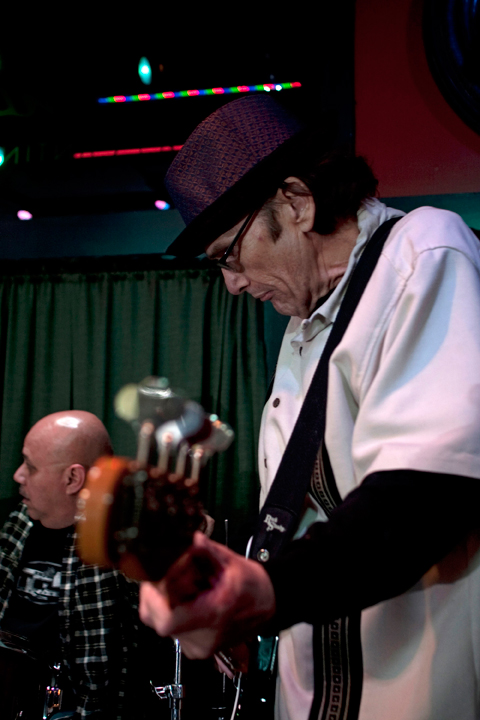 While Weathers and James have embraced fusionized blues and may prefigure a blues resurgence, other young musicians are distancing themselves from the genre.
While Weathers and James have embraced fusionized blues and may prefigure a blues resurgence, other young musicians are distancing themselves from the genre.
When Zaskoda first started Dirty Pool with bassist John Shook Jr. and drummer Jason Thompson, he wanted his band to be trad-blues, but booking necessitated a different marketing approach. “When I’m booking gigs, I don’t say blues,” Zaskoda said. “I say rock, country, and blues. Otherwise, it won’t happen. I get lots of MySpace messages saying, ‘We don’t book blues bands anymore.’ These days, we’re just a regular gigging band, just three guys who have a lot of experience.”
Dirty Pool finds good work gigging at eclectic venues like the Flying Saucer Draught Emporium and 8.0 Restaurant & Bar, but Zaskoda, a father of three young children, can’t count on those shows to pay the bills.
He joined upstart Donahew’s band “for the money,” Zaskoda said. “What [Donahew] sells is a profitable, marketable product.”
For Zaskoda, it was a fun experience but not where his heart really is.
Webber used to feel the same way. For him, playing the blues was never about getting paid or finding gigs at a venerable spot like J&J –– he just wanted to play the music. “You can see B.B. King at Bass [Performance] Hall, but, really, blues musicians will play in down-and-out places because it’s all about the music,” Webber said. “I was always trying to find bars that didn’t ever have live music, regardless of what part of town. …. Blues bands will set up shop and start playing anywhere. … It’s a wherever, whenever, for-however-long mentality.”
After releasing The Blues Stay at Home in 2007, Webber literally did stay at home. He took a break from the Fort Worth bars and recently returned to find the blues scene receiving even less love from area listeners than he remembered. “When stuff was happening, there was a lot of support,” he said. “People who knew it was there and took it for granted started asking where it had gone. A lot of blues has run its course. I feel fortunate to have had the experience. I learned from it. I grew from it.”
Seeing the sad state of affairs in the local blues world opened Webber’s eyes to what was really going on around him. For 15 years, he had been playing for crowds of people who were several decades older than he was. Playing the blues “separated me from my generation,” he said. “When I learned that life lesson, I packed up my blues CDs and put them in a box. I was on my way to the river, but I needed to get out and go to the water park where girls in bikinis were hanging out.”
The age discrepancy prompted Webber to branch out into the folk and rock styles that are more popular today. “I was tired of having women say they wanted to introduce me to their daughters, so I changed my M.O.,” he said.
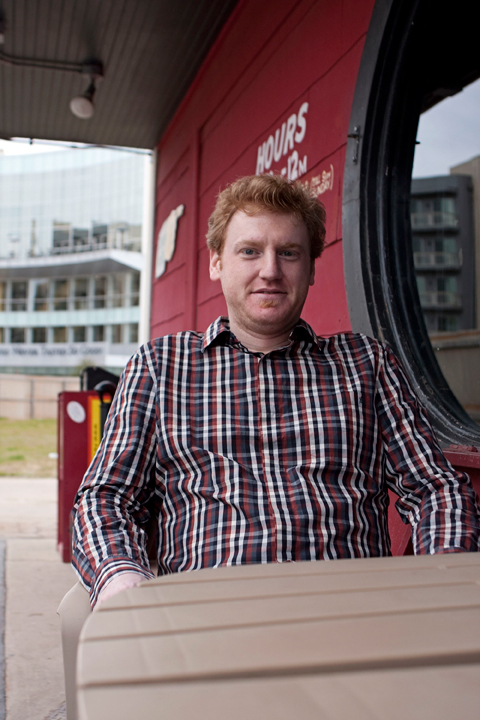 By adhering so closely to a rigidly defined genre like the blues, Webber felt he was missing the point of making music. “It’s more about the feeling and the essence of the music,” he said. “It’s not about the skill or technique. It’s about getting to the depths of a song. … There is nothing blues about my new music. It’s more about life lessons.”
By adhering so closely to a rigidly defined genre like the blues, Webber felt he was missing the point of making music. “It’s more about the feeling and the essence of the music,” he said. “It’s not about the skill or technique. It’s about getting to the depths of a song. … There is nothing blues about my new music. It’s more about life lessons.”
Webber has compiled a demo of his new material. His serious skill on an acoustic guitar and plaintive voice are still there, but gone is the Delta style that marked all of his earlier compositions. Starting anew excites the tall redhead, and, for the record, he is recruiting new bandmates. No blues experience necessary.
To adapt to a changing climate for the blues, Hinkle, too, has shuffled his band, but he’s not about to jump off any bandwagon. He plays with guys closer to 30 years old, including Shook and drummer Lucas White (Rivercrest Yacht Club, The Missile Men), which not only turns him on to a younger fanbase, one that is more likely than not to go out and spend money, but it also amps up his live performances. Younger players, he said, “just have more energy.” In 2007, Hinkle performed and recorded an album, Some Day, with an extremely young rhythm section.
Shook and White play various styles of music and serve as hired hands for Hinkle’s performances, but as musicians they are not committed bluesmen, just guys trying to make money by gigging.
Hinkle plays shows in both blues and more varied venues, here and anywhere within driving distance. As much as he likes pleasing a roomful of people with high expectations for the blues, he also enjoys drawing more people into what he does. “People like good music if they can dance to it,” he said. “I hear people say, ‘I didn’t think I liked the blues, but what you do, I love.’ That’s a testament to how diverse blues music can be.
“The diversity is what I like about the music,” he continued. “If you get creative with it, it doesn’t have to be boring … it can be very sophisticated. For me, blues is how I express myself. It’s not always depressing. It’s a feeling.”
In the upcoming months, Hinkle will travel to the West Coast to begin recording his new CD, which will show off a blend of Fort Worth blues and New Orleans rhythms, which is way more innovation than most modern blues artists give to their music. He hopes his connections with old hometown pals McClinton and Burnett will help spread his music far and wide. It’s blues, and he’s proud of what he’s doing. At this point, other than more and better-paying gigs, all he can ask for is more listeners.
There’s more than one opinion about the blues. “It’s pooped out now,” Bruton said, “but it will never die.
In the sense that the blues is the root of so many other genres, from rock to soul and R&B, it will survive. But how many kids will be moved to learn its true form and stick to its fundamentals remains to be seen. “The younger generation has been through metal and hip-hop,” the Keys’ Ross said. “They’re rediscovering the blues again. Some people believe it’s old, tired, and slow, but it’s not just that. It encompasses a lot of different things.
“I’d like to see people come out and enjoy blues and live music rather than sit at home and surf the web,” he continued. “We need to keep it going for everybody.”
As far as bassist Johnson is concerned, the folks who stay home are missing out. “The blues music around here has never been better,” he said. “We just need more venues.”
His bandmate Trevino agrees about the importance of the blues. “If you live here and don’t pick up on this, you’re missing the boat,” he said.
As Webber says, “You never miss your water until the well runs dry, meaning don’t take things for granted and then complain when they’re not around anymore.”





